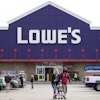
 Bob Barr
Bob BarrB2B buying experiences continue to play catch-up with B2C industries, and the next B2C innovation to hit the B2B eCommerce environment is the endless aisle.
The endless aisle concept extends physical stores into the virtual world. For example, if a medium red t-shirt isn’t available in-store, but can be shipped to any address within a reasonable timeframe, consumers can place this order from within the store. As a result, shoppers enjoy an improved customer experience when they would otherwise leave disappointed and possibly take their business elsewhere. And businesses don’t miss out on sales while maintaining strong customer relationships and brand loyalty.
One might assume that the endless aisle experience doesn’t apply to any B2B markets because there are relatively few B2B brick-and-mortar stores. This, however, simply isn’t the case.
With the shopping aisle having moved online for most B2B customers, according to Accenture Interactive’s State of B2B Procurement Study, the stock available is often still limited to the product within a predetermined shipping radius. If the product isn’t within that imaginary boundary, it’s essentially out of stock.
Thanks to the endless aisle concept that’s been popularized in the B2C environment, these virtual walls are also finally coming down in B2B. But why were they there in the first place?
B2B suppliers often program their eCommerce platforms to only list inventory as “in stock” within certain geographic parameters because they either don’t want to incur high shipping costs, or they don’t want to pass those costs on to the customer. This logic is too presumptuous, however, and it is costing many B2B companies extra revenue.
These B2B businesses shouldn’t assume that they know how much a certain shipment is worth to every customer. When deadlines are in play, the customer’s cost tolerance can go through the roof. Not only are they willing to pay higher prices for a particular product, they are often happy (exaggeration?) to do so.
Taking a Look Down the B2B Endless Aisle
When extending a B2B eCommerce model to an endless aisle offering, there are a few key features that will allow you to offer customers the best experience possible. Keep in mind that all of these support real-time transparency, which is exactly what more and more customers across B2B and B2C marketplaces are demanding.
- Inventory data. Customers should be able to see inventory numbers across all distribution centers, warehouses and retail locations as applicable. Doing so allows them to purchase early if they expect a shortfall, or they could see why their shipment will arrive in multiple shipments.
- Pricing data. With real-time pricing data, customers can decide whether going outside of the usual shipping zone is worth the extra cost.
- Fulfillment options. Allowing customers to decide how their goods are shipped — or whether to schedule a pickup — gives them the flexibility to optimize costs on their schedules.
- Re-stock notifications across channels. If a product is out of stock across the entire distribution chain, then customers should be able to set alerts to be delivered to the phones, inboxes or other touchpoints of their choice.
Research predicts 7.7 percent year-over-year growth in the online B2B marketplace. As adoption continues to rise, more value must be extracted for B2B suppliers to remain competitive. It won’t be long before customers expect an endless aisle eCommerce purchasing environment as much as they do product descriptions, images and confirmation emails now. If your business isn’t providing this, your customers may well find a supplier that does.
Bob Barr is a global B2B commerce lead at Accenture Interactive.























